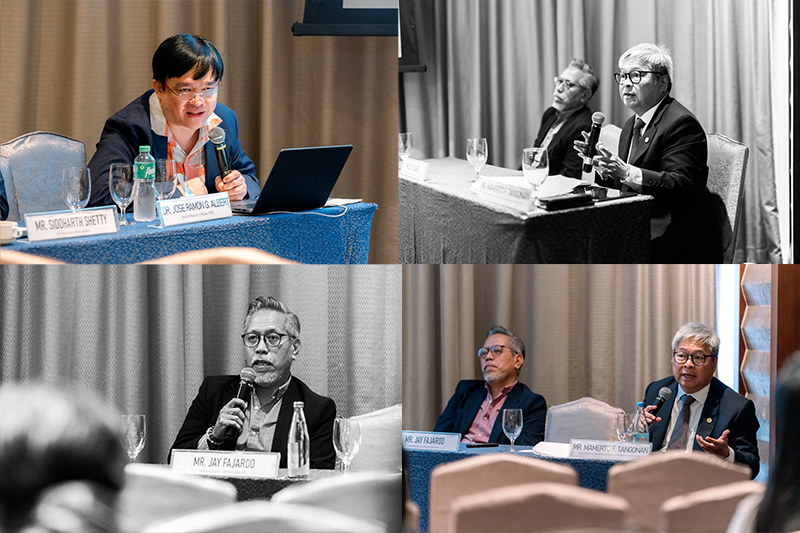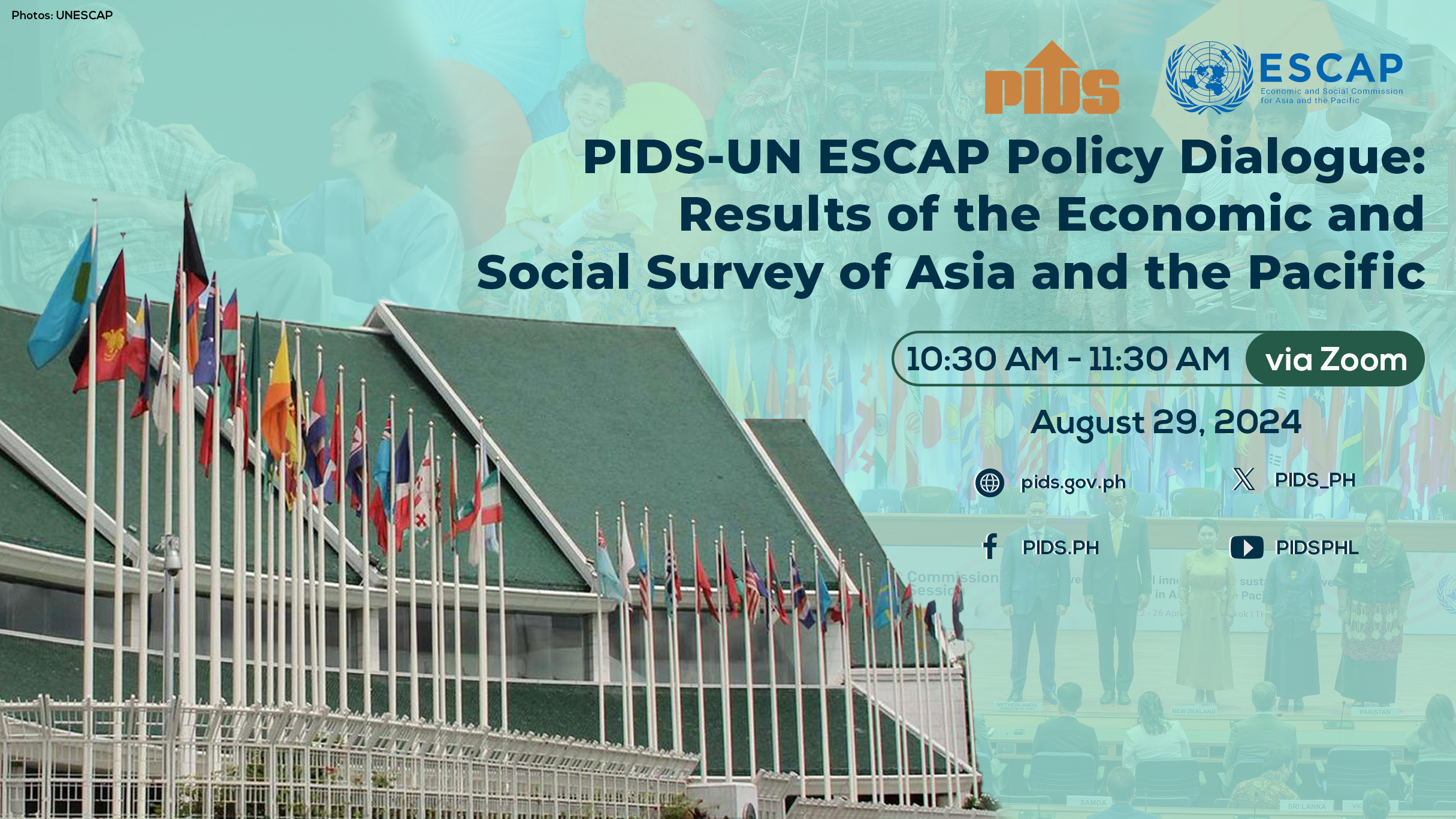Whoever wins the next presidential election, said the distinguished sociologist Randy David, “would not be so stupid” as to stop the Pantawid program. This was in this week’s Conference on Sustaining the Gains of the Conditional Cash Transfer Program in the Philippines, at the Asian Development Bank, after he had introduced himself as being an independent adviser of the CCT for some time, and admitted that he was skeptical of the program in the beginning.
Randy is now convinced, by hard evidence, that the Pantawid program is working well. He is careful to point out that, since it is essentially a scholarship program for children, its fruits will be reaped after many years, when the children find better work than their parents. Pantawid is a program against intergenerational poverty.
Thus, the drops in poverty and hunger seen in recent Social Weather Stations surveys are not due to Pantawid; the Pantawid children are not yet due to join the workforce. The drops are more likely due to the relative mildness of inflation. If poverty and hunger were to rise soon, neither would it imply the failure of Pantawid.
Pantawid is like nurturing an orchard that bears fruit in the long term. The health of the orchard can be assessed, by science, even before fruiting begins.
SWS is proud to have done the special surveys of mothers, children, teachers, health workers, local officials, bank officials and others that were used by the government, the World Bank and the ADB to assess Pantawid. It stands by its survey quality, whether or not an impact assessment is favorable.
Aniceto Orbeta Jr., of the Philippine Institute for Development Studies, told the conference that his findings are favorable—the children are attending at least 85 percent of their classes, and not cutting them due to a need to earn money by work; the mothers are getting pre- and post-natal care; the work efforts of adult family members have been stable (i.e., there is no dependency); there is no rise in drinking or gambling; etc. (See also “Real evidence supports Pantawid,” Opinion, 7/18/15.)
Pantawid is the first propoor program of the Philippine government to use a scientific system to identify beneficiaries. UP School of Statistics dean Dennis Mapa talked on the National Household Targeting System for Poverty Reduction (Listahanan), which selects the Pantawid beneficiaries from a present data base of some 10 million households from the poorest areas of the country.
The starting criterion for selection is the official poverty line, plus modest adjustments to allow the near poor to qualify. The official line is so stingy—even cruel, I would say—that literal adherence would disqualify three out of ten Pantawid beneficiaries. I prefer to call the seven of ten selections bull’s eyes, and the other three selections good hits, who are “near poor” rather than “nonpoor” (see “Pantawid: 71% bull’s eyes,” Opinion, 7/20/13; disclosure: I am a member of the Listahanan advisory committee).
President Noynoy Aquino obviously deserves credit for recognizing Pantawid’s value, continuing it without changing its name, and expanding the beneficiaries from 800,000 in 2010 to 4.4 million by 2014. At the conference, ADB president Takehiko Nakao pledged another $400 million to support the CCT.
The Pantawid program is one of the best CCTs in the world, said panelist Rogelio Gómez Hermosillo, former national coordinator of Oportunidades, the CCT of Mexico. He, Randy David, and the other panelists (Alison Chartres, assistant secretary of the Australian Department of Foreign Affairs and Trade; Aleksandra Posarac, lead economist, World Bank-Manila; and Karin Schelzig, senior social protection specialist, ADB) strongly urged that Pantawid be allowed to maintain its focus, and warned against burdening it with other objectives.
The conference’s closing speaker was Angelita Castillo, a Pantawid mother and family session leader, who has graduated from the program. Pointing to her neat attire, she said, “Maybe you think I am not a beneficiary, because I look like this? I didn’t look like this before. Now I do, thanks to Pantawid.” She managed to get four extra years of schooling, and now, in her 40s, has become a schoolteacher, and will continue to help the Pantawid.//
Randy is now convinced, by hard evidence, that the Pantawid program is working well. He is careful to point out that, since it is essentially a scholarship program for children, its fruits will be reaped after many years, when the children find better work than their parents. Pantawid is a program against intergenerational poverty.
Thus, the drops in poverty and hunger seen in recent Social Weather Stations surveys are not due to Pantawid; the Pantawid children are not yet due to join the workforce. The drops are more likely due to the relative mildness of inflation. If poverty and hunger were to rise soon, neither would it imply the failure of Pantawid.
Pantawid is like nurturing an orchard that bears fruit in the long term. The health of the orchard can be assessed, by science, even before fruiting begins.
SWS is proud to have done the special surveys of mothers, children, teachers, health workers, local officials, bank officials and others that were used by the government, the World Bank and the ADB to assess Pantawid. It stands by its survey quality, whether or not an impact assessment is favorable.
Aniceto Orbeta Jr., of the Philippine Institute for Development Studies, told the conference that his findings are favorable—the children are attending at least 85 percent of their classes, and not cutting them due to a need to earn money by work; the mothers are getting pre- and post-natal care; the work efforts of adult family members have been stable (i.e., there is no dependency); there is no rise in drinking or gambling; etc. (See also “Real evidence supports Pantawid,” Opinion, 7/18/15.)
Pantawid is the first propoor program of the Philippine government to use a scientific system to identify beneficiaries. UP School of Statistics dean Dennis Mapa talked on the National Household Targeting System for Poverty Reduction (Listahanan), which selects the Pantawid beneficiaries from a present data base of some 10 million households from the poorest areas of the country.
The starting criterion for selection is the official poverty line, plus modest adjustments to allow the near poor to qualify. The official line is so stingy—even cruel, I would say—that literal adherence would disqualify three out of ten Pantawid beneficiaries. I prefer to call the seven of ten selections bull’s eyes, and the other three selections good hits, who are “near poor” rather than “nonpoor” (see “Pantawid: 71% bull’s eyes,” Opinion, 7/20/13; disclosure: I am a member of the Listahanan advisory committee).
President Noynoy Aquino obviously deserves credit for recognizing Pantawid’s value, continuing it without changing its name, and expanding the beneficiaries from 800,000 in 2010 to 4.4 million by 2014. At the conference, ADB president Takehiko Nakao pledged another $400 million to support the CCT.
The Pantawid program is one of the best CCTs in the world, said panelist Rogelio Gómez Hermosillo, former national coordinator of Oportunidades, the CCT of Mexico. He, Randy David, and the other panelists (Alison Chartres, assistant secretary of the Australian Department of Foreign Affairs and Trade; Aleksandra Posarac, lead economist, World Bank-Manila; and Karin Schelzig, senior social protection specialist, ADB) strongly urged that Pantawid be allowed to maintain its focus, and warned against burdening it with other objectives.
The conference’s closing speaker was Angelita Castillo, a Pantawid mother and family session leader, who has graduated from the program. Pointing to her neat attire, she said, “Maybe you think I am not a beneficiary, because I look like this? I didn’t look like this before. Now I do, thanks to Pantawid.” She managed to get four extra years of schooling, and now, in her 40s, has become a schoolteacher, and will continue to help the Pantawid.//












